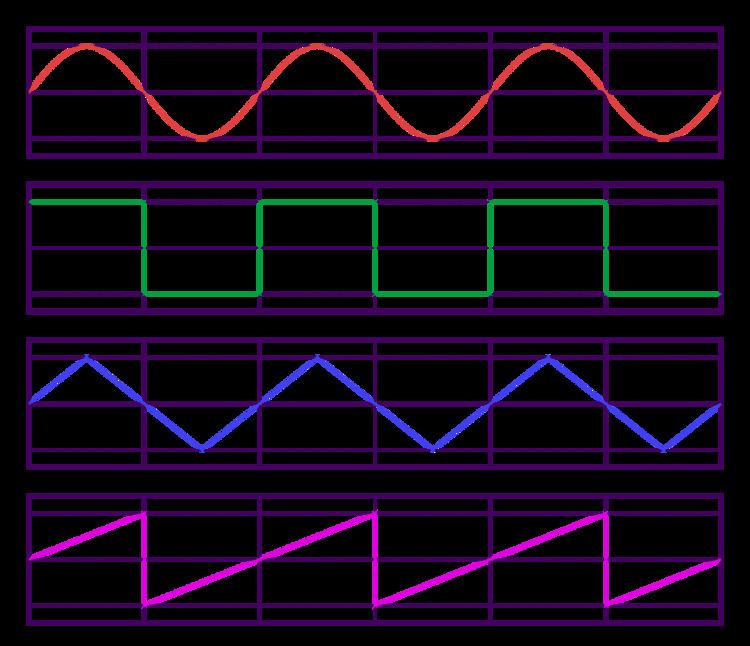 | ||
A waveform is the shape and form of a signal such as a wave moving in a physical medium or an abstract representation.
In many cases the medium in which the wave propagates does not permit a direct observation of the true form. In these cases, the term "waveform" refers to the shape of a graph of the varying quantity against time. An instrument called an oscilloscope can be used to pictorially represent a wave as a repeating image on a screen.
To be more specific, a waveform is depicted by a graph that shows the changes in a recorded signal's amplitude over the duration of recording. The amplitude of the signal is measured on the
Examples of waveforms
Most programs show waveforms to give the user a visual aid of what has been recorded. If the waveform is of low or high height (with respect to the
A periodic waveforms include these while
Other waveforms are often called composite waveforms and can often be described as a combination of a number of sinusoidal waves or other basis functions added together.
The Fourier series describes the decomposition of periodic waveforms, such that any periodic waveform can be formed by the sum of a (possibly infinite) set of fundamental and harmonic components. Finite-energy non-periodic waveforms can be analyzed into sinusoids by the Fourier transform.
